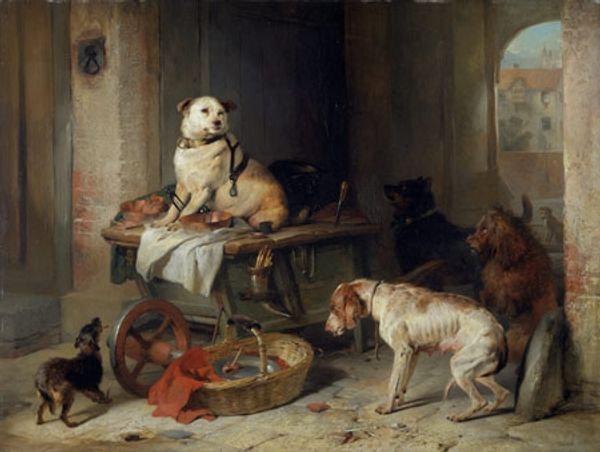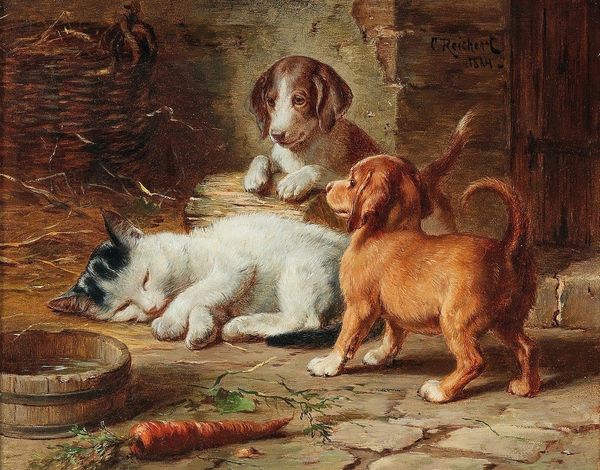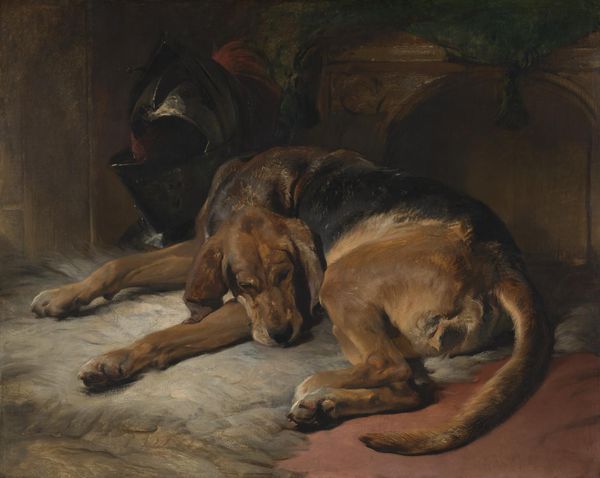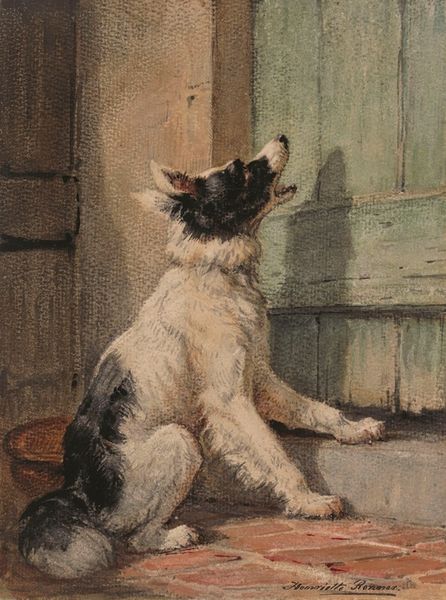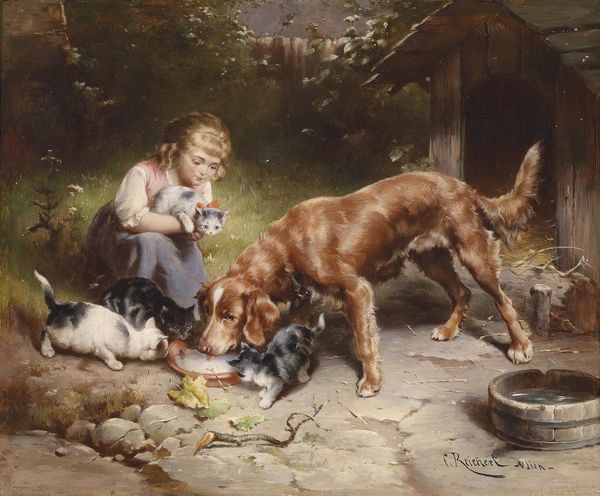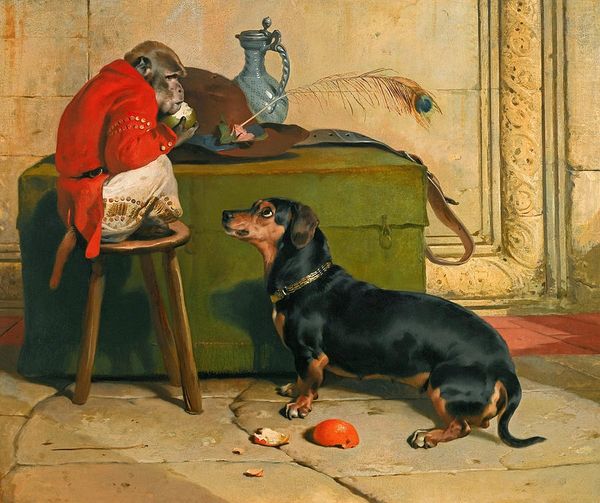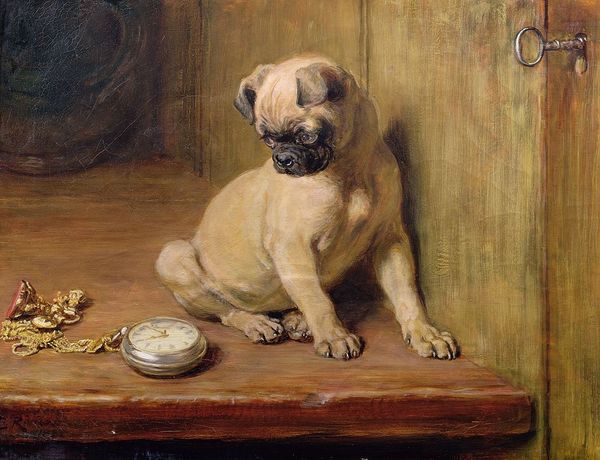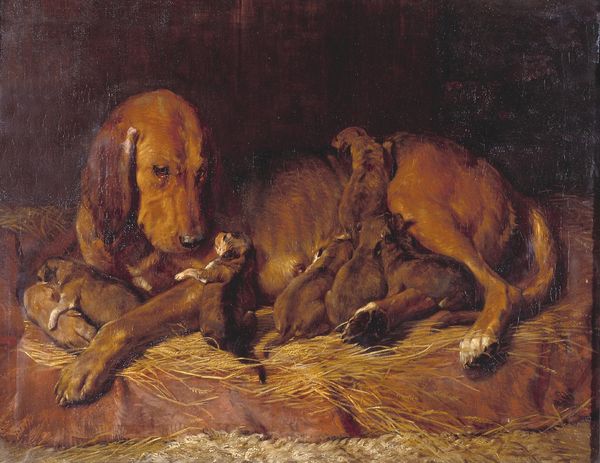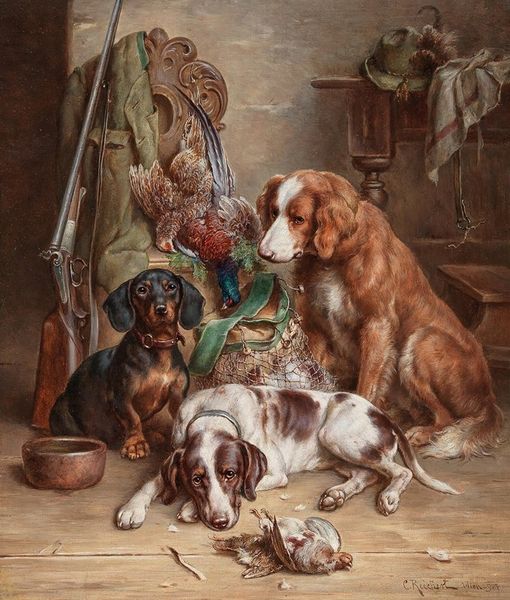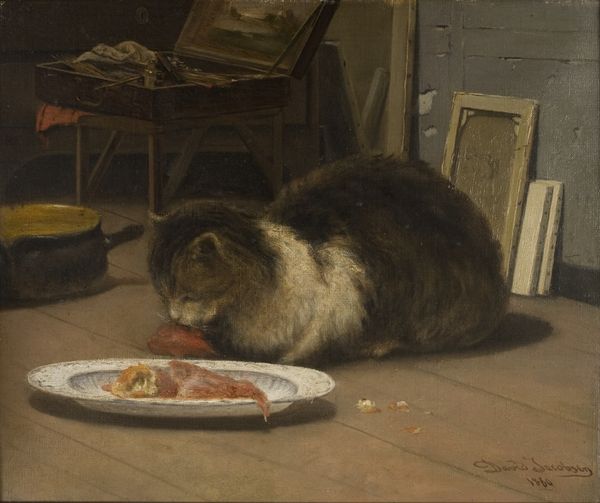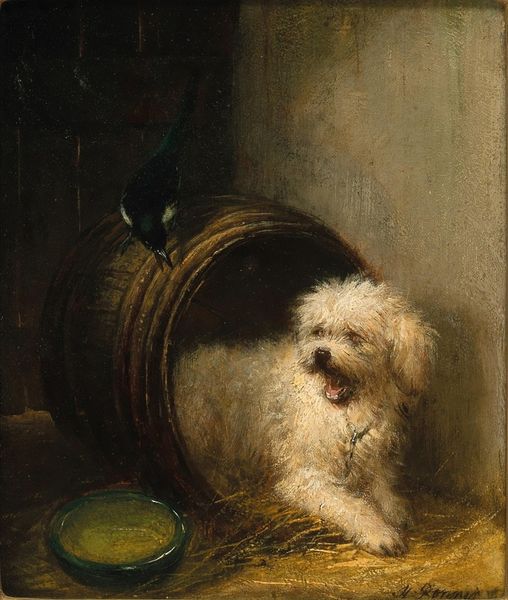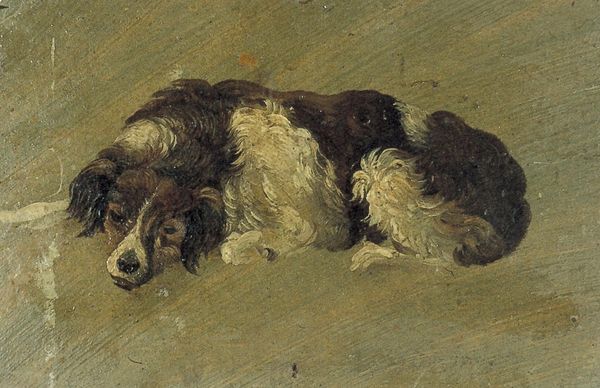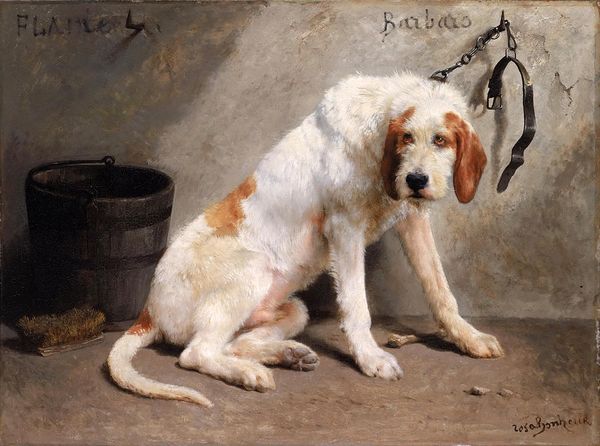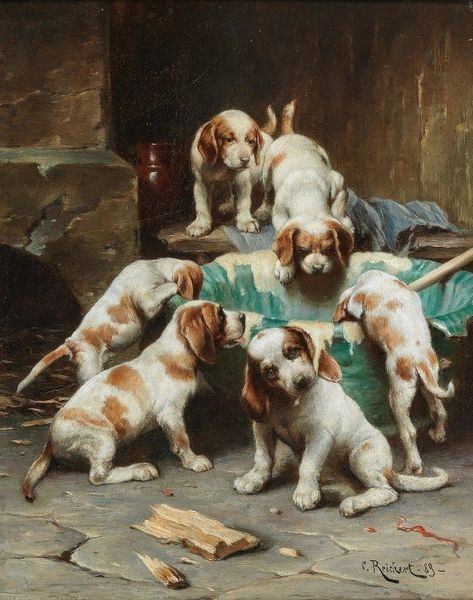
Copyright: Public Domain: Artvee
Curator: Well, hello there. Take a moment, will you, and look at this little world captured in watercolor. It's called "Kat bespiedt vogels bij een slapende hond", or "Cat spying on birds near a sleeping dog", painted by Henriëtte Ronner-Knip between 1831 and 1909. Editor: My immediate thought is tension, a delicious quiet tension. The sleeping dog seems oblivious, but the cat lurking under the kennel? That’s where the story is happening, or about to. It is romantic and real, all at once! Curator: Yes, Ronner-Knip was famous for her animal paintings, especially cats, but this one is different. It is not a portrait, it’s a slice of life in someone's backyard perhaps. She elevated genre painting using watercolors. Interesting, considering that most female artists during that time had limited recognition if working only in such humble media... Editor: Indeed. There's something wonderfully voyeuristic about it, isn't there? It’s like a snapshot taken when nobody was looking. Notice the birds. Are they real, free, or somehow encouraged by someone to feed just where it's most tempting to the cat? A lot of people believed back then that domestic peace comes naturally with house pets. The picture poses the question if it can also be somewhat enforced... Curator: A delicious dilemma visualized, maybe. And the use of light is extraordinary. The light illuminating the birds so perfectly while casting that intense shadow under the dog's kennel, framing the lurking cat's stare... She expertly leads your eye exactly where she wants. What also intrigues me, from an art historical point of view, is how Ronner-Knip managed to be successful at a time when academic painting was very popular. Editor: Right. Because these weren't noble history paintings or grand landscapes that proved any national cause; those subjects were the benchmark of accepted academic paintings back then! It goes to show how a shrewd observer of the domestic world can capture an audience. To me, this says a lot about the shifting tastes and social structures as they became increasingly accessible and commercialized at the same time... Curator: What a perfect slice of the domestic and wild! One wonders how much it mirrored our own silent tensions between the peace we long for and the tiny dramas we also tend to stir up. Editor: Yes. A miniature epic of tension—so inviting because it resonates to how fragile stability and "well being" tend to be in our societies... A lovely note of caution!
Comments
No comments
Be the first to comment and join the conversation on the ultimate creative platform.
